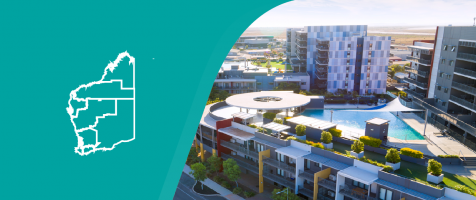WA is Australia’s largest state and comprises 10 regions: Kimberley, Pilbara, Gascoyne, Mid West, Wheatbelt, Peel, South West, Great Southern, Goldfields–Esperance and Perth.
The 9 regions outside Perth are home to 25% of WA’s population, generate approximately 40% of the state’s gross state product and are an integral part of WA’s rich cultural identity.
Many of WA’s comparative advantages are in the regions, and are well placed to realise the six strategic opportunities to build a more diverse and resilient economy.
Strategic justification
During the last resources investment boom (2007 to 2013), the WA Government focused on activating major mining, oil and gas projects and invested significantly in the liveability of regional communities. The focus for the next 20 years will need to be on diversifying and growing regional economies and communities. Investing in infrastructure that enables regions to leverage their strengths to create new business and job opportunities and attract and retain skilled workforce is a priority.
Sector challenges and opportunities
Multiple stakeholders are responsible for a range of policy areas that support regional development. A more coherent strategic framework will be required to coordinate and target action and investment to deliver long term regional outcomes.
Often the State Budget does not provide a detailed account of government investment allocated to each region. Better data on service and infrastructure investment in each region is required to provide greater transparency and make more informed investment decisions.
Liveable and attractive regional communities require effective and sustainable social services and infrastructure. Keeping pace with their changing needs over the next 20 years will be important, as populations age, grow or decline.
Finding more collaborative ways for government agencies to coordinate, plan and deliver social services and infrastructure has the potential to support better and more efficient service delivery across regional WA.
Case study
New South Wales is moving to a hub-and-spoke model that focuses major investment in regional centres that can support the communities that surround them. The model is defined as a ‘service delivery model that provides connections (spokes) to and from key centres (hubs). The spokes link to different hubs across an area, rather than focusing on one key hub. For further information, refer to: https://insw-sis.visualise.today/documents/INSW_2018SIS_BuildingMomentum.pdf

